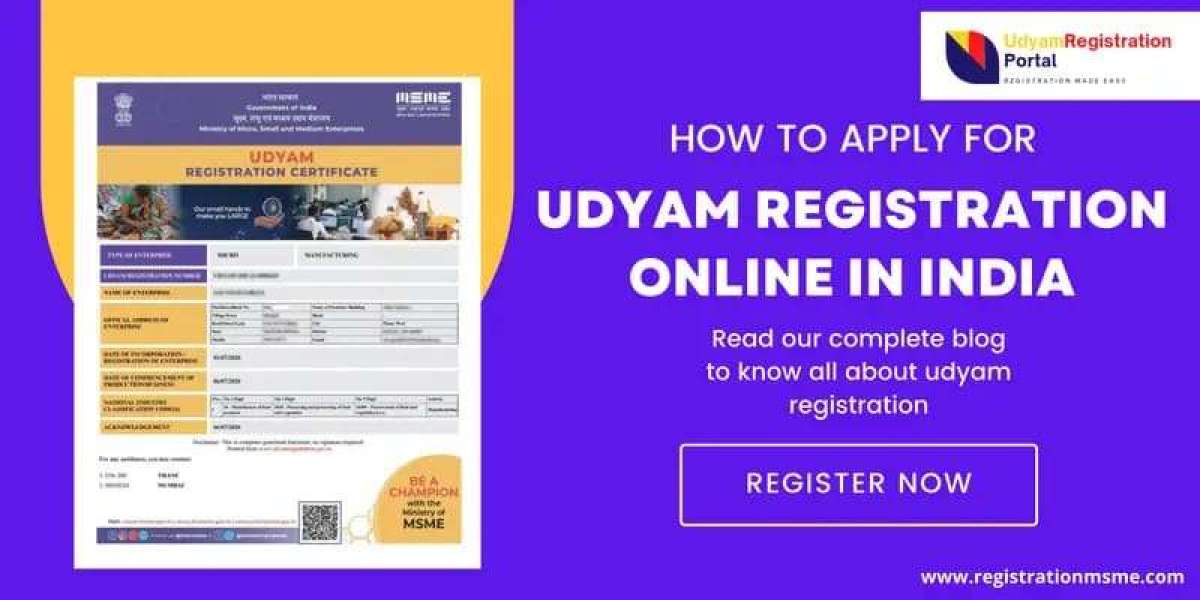Udyam Registration, a crucial identification process for Micro, Small, and Medium Enterprises (MSMEs) in India, was launched in July 2020 as a successor to the older MSME registration system. It aims to simplify the registration process and make it easier for MSMEs to access various government benefits, including loans, subsidies, and tax relief. However, many business owners wonder about the renewal process and the validity of their Udyam Registration once they obtain it. Understanding these aspects can help businesses maintain compliance and continue benefiting from government support without interruptions.
What is Udyam Registration?
Before delving into renewal and validity, it’s essential to understand what Udyam Registration is and why it matters. Udyam Registration provides an official status to micro, small, and medium enterprises, recognizing them under the MSME category. This recognition opens the door to various benefits such as financial support, priority lending, participation in government tenders, and protection against delayed payments.
Validity of Udyam Registration:
One of the most appealing features of Udyam Registration is its lifetime validity. Once a business has successfully registered on the Udyam portal, it does not need to renew its registration periodically. This lifetime validity simplifies the process and alleviates the administrative burden on small business owners who previously had to re-register or renew their MSME status.
However, lifetime validity does not mean that registered businesses can ignore their compliance requirements altogether. Business owners are required to update their information on the Udyam portal if there are any changes to their business’s size, turnover, or other significant aspects. This is because the MSME classification is based on turnover and investment in plant and machinery, which can change over time. If these changes push the business into a different category (from micro to small, for example), it is crucial to update this information to ensure the business remains compliant and eligible for the correct benefits.
When Should You Update Udyam Registration Information?
While there’s no need for renewal, businesses are required to update their Udyam Registration details annually, particularly with respect to turnover and investment. These updates are essential for the government to maintain accurate records and ensure that businesses are availing themselves of appropriate benefits based on their current classification. Failing to update this information could result in discrepancies or ineligibility for certain benefits.
Here’s a quick look at when updates might be required:
- Change in Investment or Turnover: If the business’s investment in plant and machinery or turnover changes, particularly if it moves the business into a different MSME classification.
- Expansion or Contraction of Operations: If the business expands or contracts in a way that affects its classification.
- Transition to a Different Category: If the business grows from micro to small, or from small to medium, it must update its details to reflect this new classification.
- Changes in Ownership or Structure: Significant changes in ownership, management, or structure should also be updated on the Udyam portal to keep records current.
“Importance of Staying Compliant with Udyam Registration”
Staying compliant with Udyam Registration by updating your business’s details regularly is crucial for several reasons:
- Continued Access to Benefits: The government extends various benefits to MSMEs, such as subsidies, tax exemptions, and easier access to credit. Maintaining an updated Udyam Registration ensures that you continue to enjoy these benefits without disruptions.
- Participation in Government Tenders: MSMEs registered under Udyam enjoy exclusive access to certain government tenders. By keeping your Udyam Registration up-to-date, you ensure that you remain eligible for these lucrative opportunities.
- Avoiding Penalties: Although there are no renewal requirements, non-compliance with updates may attract penalties or even disqualification from certain schemes. Regular updates ensure that your business remains compliant with government regulations.
Steps to Update Your Udyam Registration Information
Updating your Udyam Registration details is a straightforward process:
- Log into the Udyam Registration Portal: Go to the official Udyam Registration portal and log in using your Udyam Registration Number and the mobile number or email ID associated with your registration.
- Access the Update Option: Once logged in, navigate to the update option, where you can modify your business information as needed.
- Submit Updated Information: Enter the updated information, such as changes in turnover or investment, and submit the form. There’s no fee associated with updating your information, so you can ensure your registration is accurate at no additional cost.
- Verification: After submission, the system may require verification. In some cases, authorities may reach out for additional documentation to confirm the updated details.
Final Thoughts:
Udyam Registration provides an invaluable advantage for MSMEs by streamlining their access to benefits and simplifying regulatory compliance. With its lifetime validity, the registration process is hassle-free. However, business owners should remain vigilant about updating their information regularly. By keeping details accurate and compliant with Udyam Registration requirements, businesses can continue to enjoy government support, participate in exclusive opportunities, and ultimately grow in a stable, regulated environment.








